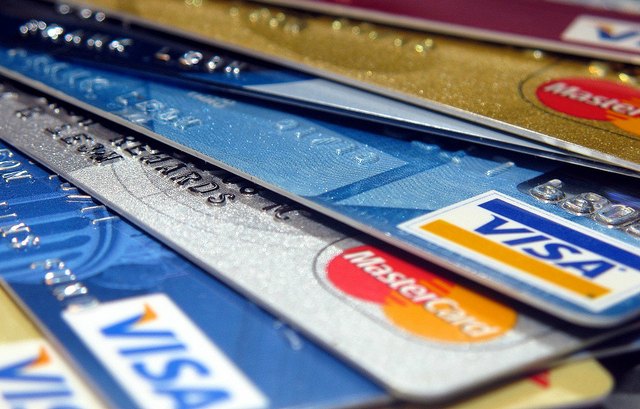10 Tips to Master Golf While Drinking Scuplin
The tense division in Europe’s union are becoming increasingly evident. Between Greece’s “no” vote, yesterday’s EU Parliament outbursts, and today’s German parliament commentary it is clear that, as Bloomberg reports, the centerpiece of Merkel’s cure for Europe – fiscal retrenchment – has catalyzed her in the eyes of many as despite her calm but firm entreaties, an economic bully. “The lesson of this crisis is more Europe, not less Europe,” Angela Merkel said in 2012 as the integrity of the region’s monetary union was threatened by financial instability, but many, like Greece, have come to understand “more Europe” means something different: “more Germany.” via A Union Divided: “More Europe” Means “More Germany”
Remember when it was announced that more than four million federal employees in the country were part of a massive data breach last month? Well, turns out that was just one of two rather large data breaches to hit the Office of Personnel Management, with the newly announced second, larger hack affecting upwards of 21 million current and former employees, as well as prospective employees, their families and others who applied for federal background investigations in the last 15 years.
The Office of Personnel Management (OPM) – essentially, the HR/personnel department for the entire federal government – announced this afternoon that it had concluded “with high confidence” that sensitive information, including the Social Security numbers were stolen from the agency’s background investigation databases.
According to the agency, an investigation into the hack affecting about 4.2 million current and former employees of the federal government announced in June led to the discovery of the larger, more wide-reaching breach.
OPM says that if an individual underwent a background investigation in 2000 or after, it is “highly likely that the individual is impacted by this cyber breach. If an individual underwent a background investigation prior to 2000, that individual still may be impacted, but it is less likely.”
Of the 21.5 million individuals affected in the breach, 19.7 million simply applied for a background investigation, while about 1.8 million non-applicants – predominantly spouses and co-habitants of applicants –were victims of the breach, OMP says.
In some cases, compromised information includes interviews conducted by background investigators and approximately 1.1 million compromised profiles include fingerprints.
OPM says that information regarding mental health or financial histories provided by those that have applied for a security clearance and by individuals contacted during the background investigation were not affected by the breach.
There is no information at this time to suggest any misuse or further dissemination of the information that was stolen from OPM’s systems, the agency states.
In the coming weeks, OPM will begin sending notification packages to individuals who may be affected by the recent beach. Those packages will include educational materials and guidance to help individuals prevent identity theft, better secure their personal and work-related data, and become more generally informed about cyber threats and other risks presented by malicious actors.
The agency says that since it discovered the second breach in April, it has implemented “action to strengthen its broader cyber defenses and information technology systems.”
“Director Katherine Archuleta and the entire Office of Personnel Management are committed to protecting the safety and security of the information of Federal employees and contractors,” the agency says in a statement. “OPM is also committed to helping those that have been impacted by this incident, safeguarding its systems and data, and fulfilling its mission to serve Federal workers.”
OPM Announces Steps to Protect Federal Workers and Others From Cyber Threats [OPM]
via Federal Data Breach Reportedly Affects An Additional 21 Million People
Photo: Frankie Leon
Credit cards are complex financial tools that get a lot of praise – and a lot of flak. When used properly, they can work as a powerful complement to your financial plan. Likewise, using a credit card improperly can wreak utter havoc on your finances. Here we aim to clear up some of the mystery surrounding credit cards and their use, and answer this common question:
“How do credit cards work, anyway?”
What Is a Credit Card?
A credit card is a small plastic card that extends a line of credit – or a temporary loan – any time a consumer uses it to make a purchase.
If the loan or charge is paid back within a specified grace period – usually between 25 and 30 days – then you don’t have to pay anything above and beyond the amount you initially charged; it amounts to a short-term, interest-free loan.
However, if you are unable or unwilling to pay your full balance in that time, you will owe interest on your purchases – money charged in addition to the amount you already owe. That’s one way card issuers earn money in exchange for making these temporary loans.
Credit card interest is generally charged as a percentage of what you owe each month. The percentage of interest you’ll owe each year is your annual percentage rate, commonly referred to as your APR.
Your APR may be anywhere from 0% to 24.99% depending on your personal credit profile, credit history, or credit score. But since months aren’t all the same length, most card issuers use a daily periodic rate (DPR) to calculate interest charges. To find out your daily periodic rate, you simply divide your APR by 365, the number of days in the year.
An example: If your APR is 20%, you’ll be charged interest on your balance at a daily rate of .054%.
There are two main types of credit cards: secured and unsecured cards.
Unsecured credit cards: The most common type of credit card out there, unsecured credit cards extend a line of credit that is not secured with a deposit. That means that, each time the card is used, the bank is loaning you money without collateral. Unsecured credit cards are for consumers with good or excellent credit.
Secured credit cards: Secured cards, meanwhile, require a deposit as collateral for the line of credit. In some cases, the deposit can even be equal to the line of credit itself — for example, a $500 deposit might allow you to charge up to $500 on the card. If you fail to pay your bill, the bank may keep the deposit. Secured cards are for people with poor credit who may have trouble qualifying for a traditional, unsecured card.
- Related: Best Credit Cards for Bad Credit
Credit Card Pros and Cons
Using a credit card can be advantageous or disastrous for your finances; it all depends on whether or not you use that credit responsibly. Here are some of the reasons for — and against — using a credit card for everyday spending or large purchases:
Credit Card Pros:
- Flexibility: With a credit card, you can make large purchases and spread out the payments over time. At the least, you have until the next billing cycle to pay off a purchase before owing interest.
- Convenience: A credit card can provide a line of credit you can use instead of taking out a loan at a bank. Using credit can also be a lot more convenient than carrying a lot of cash, and is often the best (or only) way to make a purchase online.
- Rewards and benefits: Credit cards offer a slew of rewards and perks you can’t get anywhere else. These rewards can include everything from cash back on your purchases to extended warranties to rental car insurance to roadside assistance.
- Build credit: Establishing a good personal credit history is important; your credit score can impact everything from the interest rates on your car loan and mortgage to whether you get hired for a job. Using a credit card responsibly over time is perhaps the most straightforward way to build good credit.
- Utility: Used properly, credit cards can even serve as useful budgeting tools.
Credit Card Cons:
- Debt: Unlike other forms of payment, using credit cards can get you into debt — sometimes enormous debt. Misusing credit cards can also wreck your credit quickly.
- Risk of overspending: Using credit instead of cash can cause you to disassociate your credit spending with the money you actually have – a phenomenon that can often lead to overspending or careless purchases.
- Interest: If you carry a balance, even small amounts of interest can add up over time, meaning you’ll end up paying far more than retail price on your purchases. High APRs obviously exacerbate that effect.
For some people, the benefits that come with using credit far outweigh any risks. For others, the risks are enough to deter them from using credit more than sparingly, or even at all. It all comes down to your personal tolerance for risk, your desire for credit card rewards or benefits, and your financial goals and discipline.
How Do Credit Card Companies Make Money?
When you know the various ways credit card companies make their money, it can help you try to keep your money out out of their hands and in your own pocket. While specific companies earn revenue through many different channels, they typically make money in one of three ways:
- Interchange fees: Consumers don’t pay these fees (at least, not directly). Rather, every time you use a credit card to buy something, the merchant pays a percentage of the sale back to the card issuer — in most cases, 1%-3% of the purchase.
- Credit card interest: Just as banks earn money by charging interest on car loans and mortgages, credit cards charge interest when you don’t pay back their “loan” right away, carrying a balance into the next month. With the average credit card debt in the U.S. teetering above $15,000, it’s no wonder that banks are raking in billions of dollars in credit card interest each year.
- User fees: Card issuers also charge a slew of fees to various users based on their card policies and their unique circumstances. The most common fees include annual fees, late fees, over-the-limit-fees, balance transfer fees, and cash advance fees.
Although many credit card users pay some or all of these fees at one point or another, most are completely avoidable.
For example, if you don’t want to pay an annual fee, you should go out of your way to choose a card that doesn’t charge one. There are plenty. Meanwhile, avoiding interest charges, over-the-limit fees, and late fees can generally be accomplished just by paying your bill in full each month before the due date.
The Simple Dollar Tips for Choosing a Credit Card
Getting the most out of your credit card is always easier if you choose a credit card that makes sense for your situation. Here are some tips that can help you use credit responsibly and find a credit card that is ideal for you:
If you’re considering a balance transfer…
If you have a high-interest balance you’d like to transfer, look for cards that offer a low APR for a period of at least 12 months. At least one card, the Chase Slate® Card, also waives the balance transfer fee (usually 3%) for the first 60 days of card ownership.
If you don’t want to pay an annual fee…
If you don’t plan on carrying a balance on your card and want to avoid all fees, you should look for a card that doesn’t charge an annual fee. Even among rewards credit cards, there are plenty to choose from.
If you are afraid of ending up in debt…
If you’re worried your new credit card will land you in debt, use it only for small purchases at first. You can also pay your bill more frequently online if you set up an online account. Sometimes checking in on your balance and paying it off weekly instead of monthly is all it takes to keep your budget on track.
If you want to earn rewards…
If you’re interested in rewards credit cards, you’ll want to spend some time researching the various offers available. Generally, you can choose from cards that offer cash back, hotel loyalty points, airline miles, or flexible travel points that can be redeemed in a number of ways.
If you want to make a large purchase and pay it off over time…
Using credit for a large purchase then paying it off over time makes a lot more sense when you have a card that offers a low APR. Look for cards with a low introductory APR at the very least. Some even offer a 0% APR on purchases for six months or more.
Does It Ever Make Sense to Carry a Balance?
Always pay your balance in full if possible. When you carry a balance, you’ll owe interest on it — meaning that, in the long run, you might end up paying $120 or more for that $99 grill you got on sale. But there are limited situations when carrying a balance can make sense.
Let’s say you use your card to make a large purchase and plan to pay it off over the course or three or four months so you don’t have to raid your emergency fund. If you charge the purchase on your card, you can pay it off over the next few months while only paying a nominal amount of interest.
Another example: Sometimes you can use credit card balance transfer offers to save money on loans you were initially paying off elsewhere. If you were paying 20% APR on a personal loan, for example, but transferred the balance to a card with 0% APR for a promotional period of, say, 12 months, you could save a ton of money if you pay it down within the year – even after paying the typical balance transfer fee of 3%, if applicable.
Although there are a few instances where it might make sense to carry a balance, doing so is almost never in your best interest the rest of the time. There is usually no reason to pay more for your bills and expenses than you have to. To avoid paying interest, you should always pay your balance in full whenever possible.
Glossary of Credit Card Terms
Here’s a guide to some common or confusing terms you might see in a credit card offer, billing statement, or the fine print of your agreement.
Basics:
- Credit card: a small plastic card that extends a line of credit – or loan – to the person who uses it to make a purchase.
- APR : Annual percentage rate, or APR, is the percentage of interest you’ll pay on your balance over the course of a year.
- DPR: Daily periodic rate is the amount of interest charged on a daily basis. Generally, this is calculated by dividing the APR by 365.
- Penalty APR: If you make a late payment, you may become subject to a higher APR for a limited period of time. This is often called a penalty APR.
- Grace period: A grace period is the amount of time you have to pay your balance in full to avoid paying interest. Usually, grace periods are 25-30 days.
- Due date: The day you are required to make payment to your card issuer to avoid paying a late fee. If you also want to avoid paying credit card interest, you’ll need to pay your balance in full by this day.
- Credit limit: Your credit limit is how much you charge on your card. This is a predetermined amount of money your bank or card issuer has agreed to extend through your credit card.
Fees:
- Late fee: Your credit card may charge you a fee in the neighborhood of $25-$45 if you pay your bill after the due date.
- Over-the-limit fee: This is charged by card issuers when you spend more than your credit limit.
- Annual fee: Some credit cards — usually those with the most generous rewards programs and benefits — charge an annual fee for their cardholders. Most annual fees range between $39 and $399; the average is around $95.
- Balance transfer fee: Sometimes it makes sense to transfer a balance from a card with a high APR to one with a low one – or even one with 0% APR for a limited time. However, it’s important to note that many cards typically charge a one-time fee for balance transfers – usually 3% of the amount you transfer.
- Cash-advance fee: While some cards allow you to use your credit card to get cash out of an ATM, most charge a hefty cash-advance fee. Interest also starts accruing on cash advances right away. In other words, there is no grace period for cash advances.
- Foreign transaction fee: Some cards charge this fee on transactions made overseas or outside of one’s home country. In most cases, this fee is equal to 1% to 3% of every purchase made abroad.
- Returned-payment fee: If you attempt to make a payment on your card and it is rejected, you’ll owe a returned-payment fee.
The post How Do Credit Cards Work? appeared first on The Simple Dollar.





